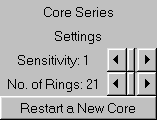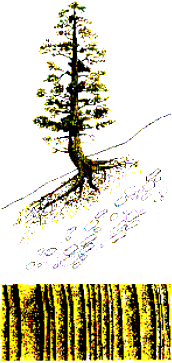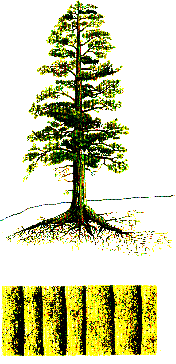Change the sensitivity of your virtual core with scroll bars, as on the right:
- Mouse click on the arrows of the "Sensitivity" scroll bar
- The lower the number, the higher the ring-width sensitivity
- The higher the number, the higher the ring-width complacency
- Mouse click the "Restart a New Core" button
- Important point: The number of rings can also be changed:
- A longer tree-ring series may be needed to crossdate complacent series
- Mouse click on the arrows of the "Number of Rings" scroll bar
- Mouse click the "Restart a New Core" button
|
 |



